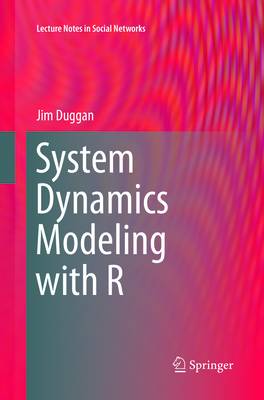
- Afhalen na 1 uur in een winkel met voorraad
- Gratis thuislevering in België vanaf € 30
- Ruim aanbod met 7 miljoen producten
- Afhalen na 1 uur in een winkel met voorraad
- Gratis thuislevering in België vanaf € 30
- Ruim aanbod met 7 miljoen producten
Zoeken
€ 116,45
+ 232 punten
Uitvoering
Omschrijving
This new interdisciplinary work presents system dynamics as a powerful approach to enable analysts build simulation models of social systems, with a view toward enhancing decision making. Grounded in the feedback perspective of complex systems, the book provides a practical introduction to system dynamics, and covers key concepts such as stocks, flows, and feedback. Societal challenges such as predicting the impact of an emerging infectious disease, estimating population growth, and assessing the capacity of health services to cope with demographic change can all benefit from the application of computer simulation. This text explains important building blocks of the system dynamics approach, including material delays, stock management heuristics, and how to model effects between different systemic elements. Models from epidemiology, health systems, and economics are presented to illuminate important ideas, and the R programming language is used to provide an open-source and interoperable way to build system dynamics models. System Dynamics Modeling with R also describes hands-on techniques that can enhance client confidence in system dynamic models, including model testing, model analysis, and calibration. Developed from the author's course in system dynamics, this book is written for undergraduate and postgraduate students of management, operations research, computer science, and applied mathematics. Its focus is on the fundamental building blocks of system dynamics models, and its choice of R as a modeling language make it an ideal reference text for those wishing to integrate system dynamics modeling with related data analytic methods and techniques.
Specificaties
Betrokkenen
- Auteur(s):
- Uitgeverij:
Inhoud
- Aantal bladzijden:
- 176
- Taal:
- Engels
- Reeks:
Eigenschappen
- Productcode (EAN):
- 9783319816630
- Verschijningsdatum:
- 30/05/2018
- Uitvoering:
- Paperback
- Formaat:
- Trade paperback (VS)
- Afmetingen:
- 155 mm x 235 mm
- Gewicht:
- 3407 g

Alleen bij Standaard Boekhandel
+ 232 punten op je klantenkaart van Standaard Boekhandel
Beoordelingen
We publiceren alleen reviews die voldoen aan de voorwaarden voor reviews. Bekijk onze voorwaarden voor reviews.











